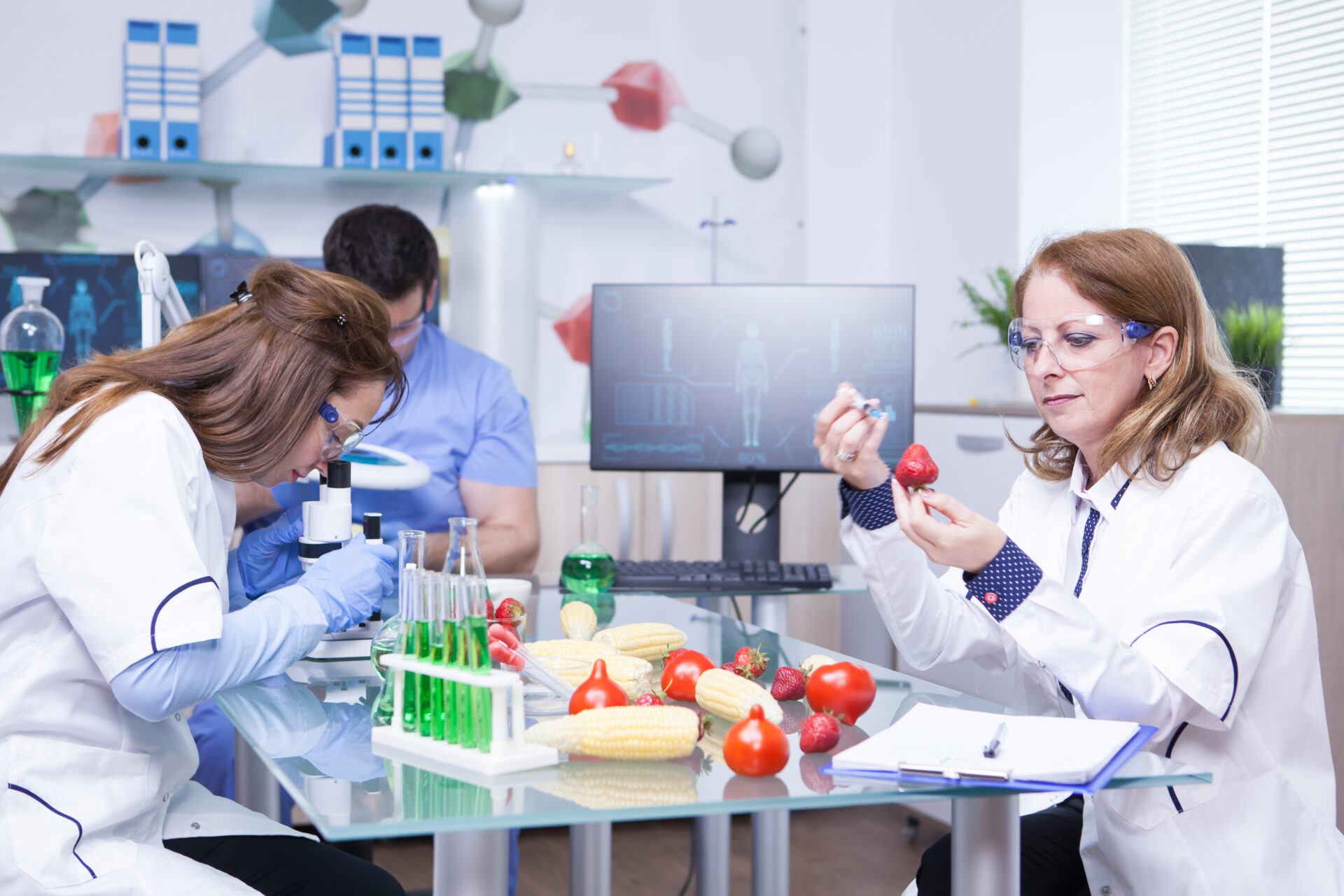With so much going on in today’s life, people in the USA would like to eat healthier. One size does not fit all, though. Herein lies the importance of DNA-based personalized nutrition, which tailors nutrition specifically to the individual based on their distinct genetic code. Thus, it designs dietary plans that are solely made for you.
This particular approach is commonly known as nutrigenomics and basically examines the interaction of genes with nutrients. And all of it is provided in the USA by companies in an easy way to set consumers off. Genetic testing kits bring information about one’s body. Such an application can further provide users with ideas on meal customization and even allergy ‘forecast’. Tracking isn’t stressful with those app integrations. An increasing number of Americans are turning to this for improved energy, weight control, and general wellness. Let’s find out in this write-up how it operates, its advantages, and what you receive in return.
What Is DNA-Based Personalized Nutrition?
Personalized nutrition based on DNA begins with the premise that the body’s response to food is determined by genetics. Each person has different and unique DNA, similar to fingerprints. For instance, some people may naturally metabolize fat more quickly, while others may require more of certain vitamins present in certain types of food.
How Does It Work?
Ordering the test is simple. A testing kit is ordered, which comes with an easy-to-use saliva collection unit. You swab your cheek or spit into a tube provided at home. Mail the sample to a lab in the USA. They analyze your DNA for key markers associated with nutrition.
You receive a report after a few weeks, which specifically talks about your nutrient needs, food responses, and others. Meal plan options are formulated from that end for your genotype by, for example, focusing on veggies if your genes indicate that you absorb iron well from plants.
It’s a science-based method. Studies show genes are behind such phenomena as lactose tolerance or caffeine breakdown. In the U.S., labs adhere to very strict rules; it’s all to keep your data safe. It’s not magic — it’s just that biology can be practical.
The Rise of Genetic Testing Kits in the USA
A popular option available from genetic testing kits makes it possible for the people to receive personalized nutrition without consulting a doctor just by ordering through the Web, and getting results in a digital manner that examines dozens of genes related to diet.
Popular Options Available
This field has many companies leading the way in the USA. GenoPalate offers coaching-paired kits. Nutrigenomix concentrates more on detailed gene reports. InsideTracker marries DNA with blood tests for the full scoop. Even the big names like 23andMe throw in nutrition reports in their health kits.
Why choose one? Depends on what you want to get there. If you like quickly creating meals from a kit with recipe ideas. If you want a deeper health check, then certainly the ones with allergy predictions. Most cost between $100 and $300, with uploading old data from other tests.
Getting a genetic testing kit is the first step. Unlock the veil of tailored advice. Most have reported that it brings a change in the way they shop and cook. Remember, these kits are not to be substituted for professional medical recommendations. Always see a doctor for serious health issues.
This Approach’s Key Benefits
Using personalized nutrition based on genetics is an important shift in reality: not so much about eating less, but about eating right. These are the main ones:
- Better Weight Management: By determining whether you are a carb person or a fat person, genes make it possible to design personalized weight-loss meal plans that work for shedding off pounds without the struggle.
- Improved Energy Levels: Learn which nutrients boost your metabolism so that often, users feel more alert after following the plans.
- Stronger Immunity: Allergy predictions through the kits prevent you from coming into contact with these triggers, hence keeping you healthier throughout the year.
- Lifestyle Integration: Meal tracking applications are easily accessible on your phone. Some of them sync with your fitness applications to give you an all-inclusive view.
- Long Term Wellness: Making food suitable for genes makes people develop long-lasting eating habits without undergoing the hassle of roller-coaster dieting.
These make it most popular among busy Americans- Results are seen within weeks, whether an athlete or an office worker.
Gene-Tailored Meal Customization
One of the fun meal-prepping elements is personalizing food to the customer. The genetic analysis offered food that was beneficial for this individual, e.g., in case the genes stipulate having the ability to digest dairy products, cheese may be recommended, otherwise, a plant-based alternative may be recommended.
Develop Your Personal Plan
Start with your Gene Food dietary test report: this scores foods between 1-100 based on your biology. The higher the free, the better the match. Then, make use of utilities for producing weekly menus.
A sample day would look something like this:
- Breakfast: Oatmeal and berries for fiber-dependent folks.
- Lunch: Grilled chicken salad, for protein enthusiasts.
- Dinner: Salmon & quinoa for omega-3’s. &tc.
Companies such as GenoPalate offer recipes complete with shopping lists, making meal customization easy and gross. There is no need to guess – just follow the plan. Over time, fine-tune it with how the body feels. Remind users with app integrations and check progress with those.
The tendency is growing in the US with grocery apps that recommend gene-friendly items. It’s a bit like having a personal chef who knows your DNA.
Allergy Predictions: Playing It Safe with Genetic Information
More than millions of people in the United States suffer from food allergies. Genetic technologies can predict allergies by providing the chances of risks at an early age; these are indicative but not determinative guarantees.
Understanding Genetic Risk
Genes are involved in sensitivities to be particular. For instance, some markers elevate the chances of reacting to peanuts. A genetic testing kit scans these. Your report may state, “Higher risk for gluten issues – try alternatives.”
This information will be very helpful for planning how to tailor meals. One can avoid foods that are high-risk and focus on those that are safe, which is very empowering for planning children’s diets.
Some genes have been associated with the risk of common allergies such as shellfish or eggs. But don’t forget, it’s also environmental. Take allergy forecasts with a grain of salt. Get experts to perform tests such as skin pricks if they feel it necessary.
Integration of applications to record reactions thereby improving safety over time as a routine is developed for eating.
App Integrations
Technology keeps everything tied up. And the app connection makes it possible for your DNA data to tie into the things used every day, like scanning a barcode to see if something fits your genes.
Ways in Which Apps Assist
Several platforms integrate with genetic testing kits. Some examples of such services include:
- Report synchronization with MyFitnessPal for calorie tweaking.
- Habit app for AI-generated meal plans.
- InsideTracker apps for tracking biomarkers in conjunction with DNA.
Such tools generate push notifications such as “This snack matches the allergies you usually predict.” They also export data to wearables for tips on exercises.
Privacy laws in the USA legally protect your information. Choose apps that have robust security features. All of these things are sandwiched into a single setup to make meal customization completely manageable. Keep track of the progress, tweak the plans if need be, and stay motivated.
Comparing Top Genetic Testing Kits
Useful tables to compare companies offering genetic tests in the USA with features at a glance that usually come with direct-to-home DNA testing kits
| Kit Name | Price Range | Key Features | Best For |
| GenoPalate | $99–$199 | Food scores, recipes, and meal coaching | Customized nutrition |
| Nutrigenomix | $150–$250 | Nutrient report and food intolerances | Allergy predictions |
| 23andMe Health | $199 | Ancestry + Nutrition | Newbies |
| InsideTracker | $250-$600 | Analyzed DNA plus blood testing also features application | Full wellness |
| CircleDNA | $189-$599 | 500+ comprehensive reports, fitness apps integration | App integrations |
There is variability in the table so you can choose the one based on your budget and requirements. All use USA labs for quick and accurate results.
Challenges and the Way Forward
Like any emerging field, personalized nutrition based on genes faces its own set of challenges. Not everyone can afford it because cost is a major limiting factor. The results are not consistent since genes are only a fraction of what makes an individual tick; lifestyle is a critical variable as well.
Of privacy concerns with the majority, however, adhere to US standards. Accuracy improved through research. The future will see more app integrations and inexpensive genetic testing kits.
Forecasting Growth. By 2030, genetically personalized nutrition may be part of the mainstream diet for most people. This is thrilling for health professionals and ordinary individuals.
Conclusion
Personalized nutrition based on DNA changes the way Americans eat. Imagine smart meal customization and genetic testing kits all put into your hands. Allergy predictions will keep you safe, and the app integrations make it so much fun.
Start with a small kit; try one meal, track with an app. Check how your body reacts. This is no flash in the pan—it’s science to live better. Unlock your unique genes to a healthier you. The best diet is within your DNA.




